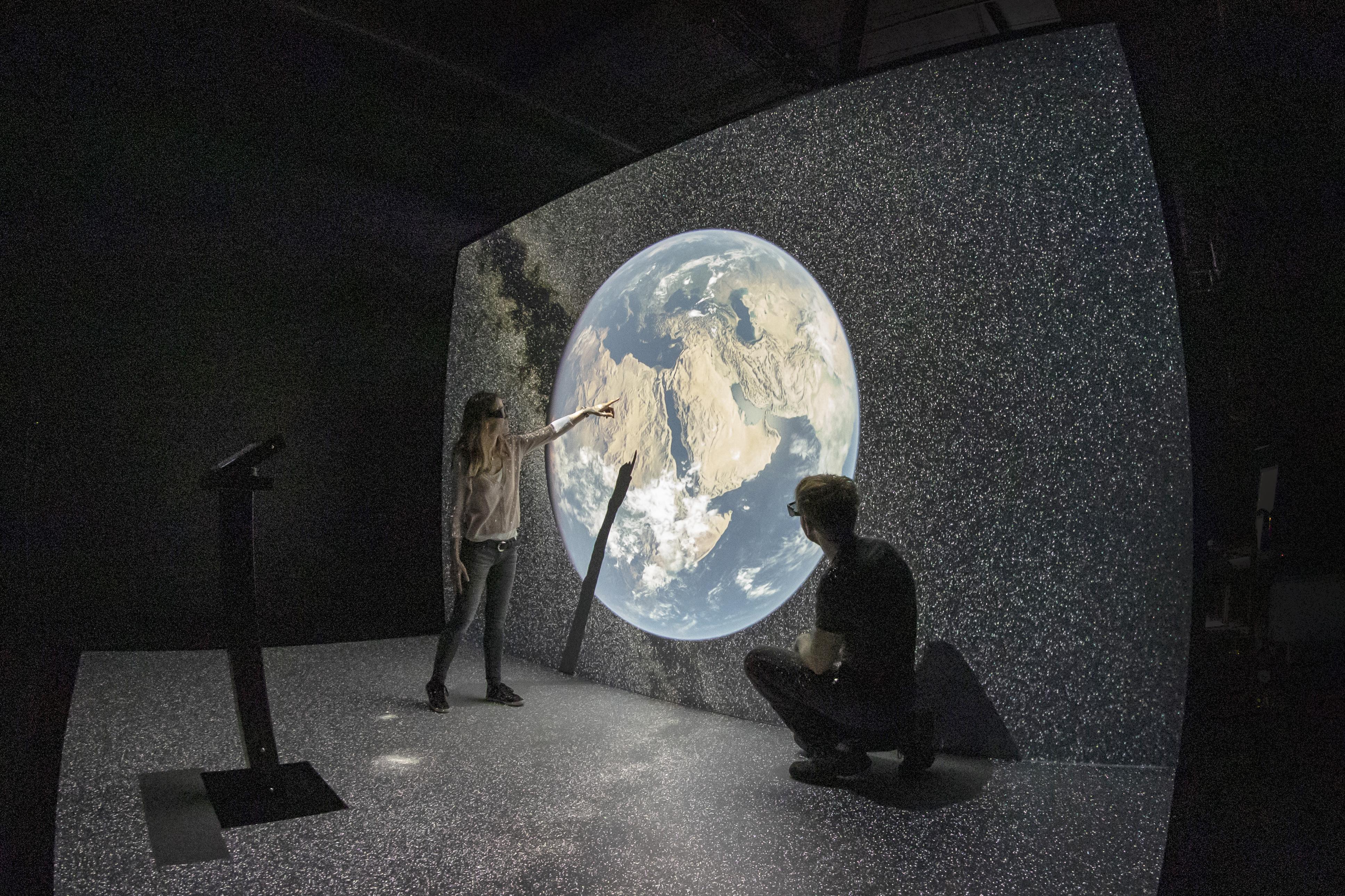A sensory immersion in galaxies of data to explore the cosmos

Space Time Elastic. 2022 EPFL/LASTRO, EM- CC-BY-SA 4.0
The new exhibition produced by EPFL Pavilions transforms the scientific inquiry of astrophysics into sensory and emotional experiences. Until February 5, 2023, the public will have the opportunity to plunge into the immensity of the Universe and its history, transcending the frontiers of art and science.
Since the dawn of time, humans have gazed at the stars and attempted to comprehend the cosmos, driven by their fierce desire for exploration. Throughout centuries of observation, our perception of the Universe has evolved along with the tools invented to map and chronicle its formation. Once considered infinite, static and timeless, the cosmos is now understood to have a dynamic and evolving geometry. While significantly expanding our knowledge and comprehension of its immensity, new astronomical technologies produce equally boundless amounts of abstract data.
The exhibition Cosmos Archaeology: Explorations in Time and Space, which originates in a collaboration between EPFL’s Laboratory for Experimental Museology (eM+) of Sarah Kenderdine and EPFL’s Laboratory of Astrophysics (LASTRO) of Jean-Paul Kneib, transforms largely imperceptible data into experiences accessible to human senses.
Through immersive visualization, interactive technologies and the visual arts, the exhibition “makes the Universe explorable and accessible to all by translating vast volumes of advanced scientific data into tangible encounters,” explains Jean-Paul Kneib, head of the Laboratory of Astrophysics (LASTRO).

From real-time simulations to hemispherical contemplations, 3D movie, ceramic artworks, photographs and kinetic sculpture, the nineteen installations feature state-of-the-art interfaces that propel viewers through the infinite scales of the Universe and empowers them to grasp the extent and evolution of our vast cosmos cosmos over 13.7 billion years. “Immersive systems convey higher cognitive loadings as they allow us to engage into sensory and emotional encounters with data that would otherwise elude our perception”, says Sarah Kenderdine, head of the eM+.
Visitors are also invited into the exploration of stars and galaxies, introduced to the tools of space observation, immerged into the sounds of planets or witnessing the debris circulating over our heads, and plunged into the memory of those famous or hidden figures who devoted their lives to star space exploration.
Amongst the installations presented in the exhibition, The Dynamic Universe is the result of a two-years project carried out jointly by the two laboratories. On one side, scientists from LASTRO developed the open-source software VIRUP (VIrtual Reality Universe Project), which enables the visualization of terabytes of data at once, creating a visual representation of the data in real-time. On the other side, researchers from the Laboratory for Experimental Museology (eM+) developed an immersive system which gives an interactive dimension to this tool.
After being released as a 3D film in 2021 (Archaeology of Light, also showcased in the exhibition), this project now takes the form of a tangible representation of the Universe.
This immersive movie starts from Earth, and charts out a voyage throughout the various scales of the universe, from our solar system, to the Milky Way, all the way to the cosmic web and the relic light of the Big Bang.